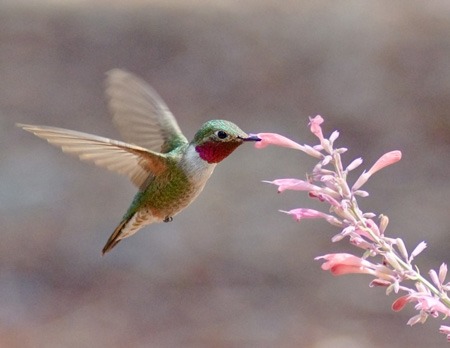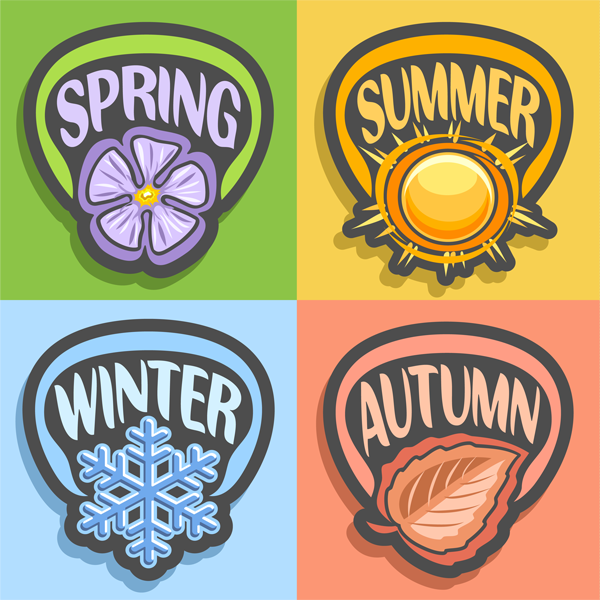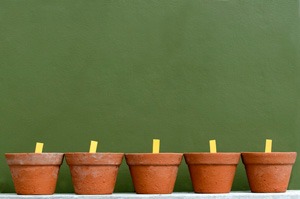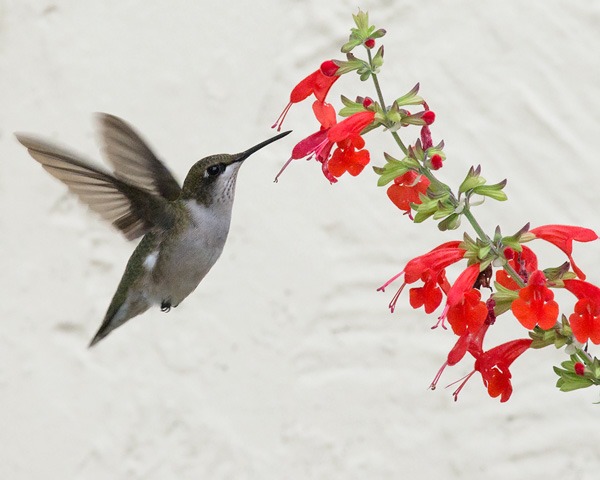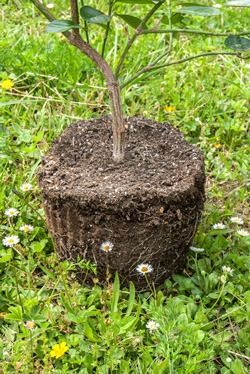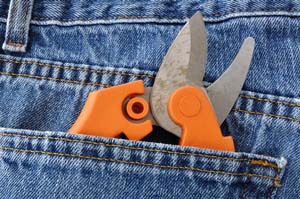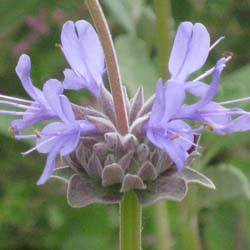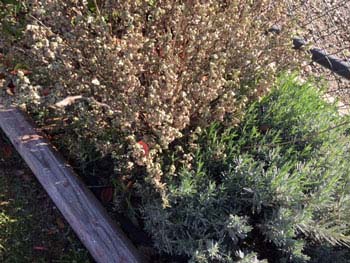
Ask Mr. Sage is our new question-and-answer feature. It is based on topics raised in calls and emails we receive at Flowers by the Sea. Questions cover a broad range of topics concerning sages (Salvia spp.), companion plants and general gardening topics. When you have a particularly helpful question and we have an answer, then Mr. Sage speaks!
Posted: Tuesday, April 13, 2021
Synopsis:
Hummingbirds love Agastache. Mr. Sage explains that just because one kind of Agastache is wrong for your climate, it doesn't mean they all are and that the genus is native to most of the United States. Ask Mr. Sage is a regular feature in our Everything Salvias Blog that answers customer questions.
Read the Article
Posted: Thursday, December 3, 2020
Synopsis:
When growing Salvias that begin blooming in fall, Mr. Sage says it's important to know when first frost likely will occur in your area. Ask Mr. Sage is a regular feature of the FBTS Everything Salvias Blog.
Read the Article
Posted: Thursday, June 25, 2020
Synopsis:
After your Salvias from Flowers by the Sea arrive, what size pots should you transplant them in for your container garden? The answer depends on the kind of sages you need to transplant. Ask Mr. Sage is a regular feature in our FBTS Everything Salvias Blog that answers customer questions about growing sages and companion plants.
Read the Article
Posted: Tuesday, May 26, 2020
Synopsis:
Plant developers introduce dozens of new Salvia varieties yearly. Flowers by the Sea Farm & Online Nursery selects the best following a careful trialing process. Learn more at Ask Mr. Sage, a column responding to customer questions in the FBTS Everything Salvias Blog.
Read the Article
Posted: Wednesday, May 13, 2020
Synopsis:
Watch out for sayings that warn against planting in summer. It's a good time to transplant Salvias if you give them some extra care. Ask Mr. Sage is a regular feature of Our Everything Salvias Blog and is based on customer questions.
Read the Article
Posted: Wednesday, June 12, 2019
Synopsis:
It's helpful to understand botanical terminology such as clone, variety, and cultivar. Mr. Sage explains what the three words mean and how the processes of cloning and plant development work. Ask Mr. Sage is a regular feature of the FBTS Everything Salvias Blog and is based on questions from customers.
Read the Article
Posted: Friday, March 22, 2019
Synopsis:
Selecting the right types of Tropical Sage (Salvia coccinea) can be confusing when viewing them in a catalog and seeing similar flower colors. Yet they may differ in cultivation needs, foliage, heat tolerance, and size. Mr. Sage offers ideas for comparing differences and similarities. Ask Mr. Sage is a regular feature of the FBTS Everything Salvias Blog, which responds to questions from customers.
Read the Article
Posted: Saturday, March 17, 2018
Synopsis:
Plants may wither even if you regularly water them. When the ground surrounding a new planting's root ball is moist but the roots remain dry, that indicates moisture isn't transferring properly from the outer soil. Flowers by the Sea Nursery outlines a process for diagnosing dry root ball and combating it.
Read the Article
Posted: Saturday, August 19, 2017
Synopsis: Planning for Salvia garden success requires following the rule of selecting the right plant for the right place. Desert sages aren't appropriate for the damp Southeast. Moisture-loving ones aren't right for desert climates where they need lots of watering to survive. Flowers by the Sea Farm and Online Nursery offers tips for selecting plants based on local climate. Ask Mr. Sage is a regular feature of the FBTS Everything Salvias Blog.
Read the Article
Posted: Monday, April 10, 2017
Synopsis:
Flowers by the Sea Online Nursery specializes in Salvias and often receives questions about how to prune them. Although getting good at pruning takes practice, Salvias rebound quickly if you make mistakes. A key to successful pruning is understanding the varying needs of four main categories of sages. Ask Mr. Sage is a regular feature of the FBTS Everything Salvias Blog.
Read the Article
Posted: Thursday, September 8, 2016
Synopsis: Drought resistant California native sages thrive when planted in fall. It's easier for roots to become established when soil is warm, air temperatures are cooler and precipitation is increasing. Ask Mr. Sage is a regular feature of the Everything Salvias Blog and is based on calls and emails from customers.
Read the Article
Posted: Tuesday, April 19, 2016
Synopsis:
A California native sage that looks like it is suffering from drought may actually have root disease caused by a water mold called Phytophthora. Natives are affected by types of this pathogen that strike when soil is moist and temperatures are hot. Ask Mr. Sage is a regular feature of the Everything Salvias Blog and is based on calls and emails from customers.
Read the Article

